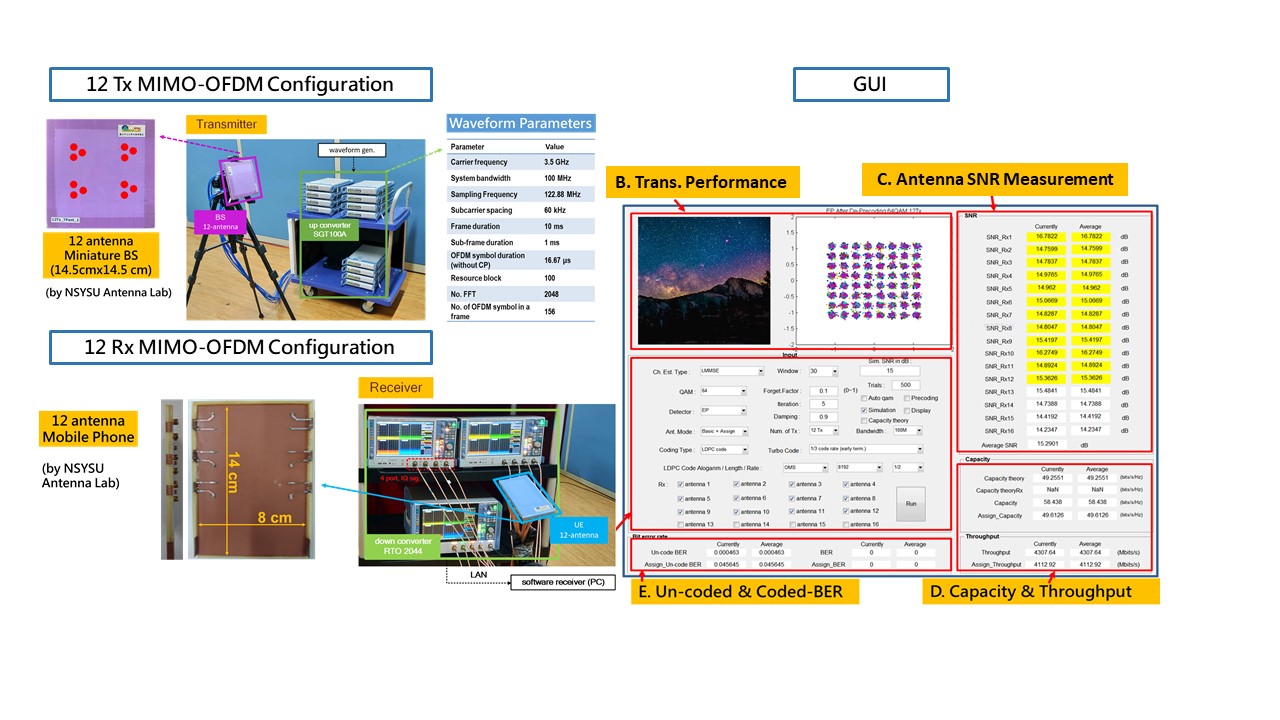AgriTalk: Dialog between Humans and Agriculture

Author(s)
Chao-Kai WenBiography
Professor Chao-Kai Wen is the director of the Institute of Communications, National Sun Yat-sen University and the associate dean of the Engineering College. His research expertise is wireless communication and signal processing.
Academy/University/Organization
National Sun Yat-sen University-
TAGS
-
Share this article
You are free to share this article under the Attribution 4.0 International license
- ENGINEERING & TECHNOLOGIES
- Text & Image
- March 17,2021
At present, mobile communications around the world are moving from fourth generation (4G) to fifth generation (5G) technology. In order to meet the demand for increased transmission rates, one solution is to use multi-input-multi-output (MIMO) antenna technology in the sub-6 GHz frequency band to improve spectrum efficiency under limited bandwidth resources—a solution that is akin to building a skyscraper. The mobile phone multi-antenna system is like a magician on the spectrum. As long as an additional antenna gate is opened, one can use that gate for signal transmission. Although this is a simple principle, the traditional theory believes that the two antennas need to be separated by 0.5 wavelength in order to significantly reduce interference. The research teams from National Sun Yat-sen University have shattered the traditional myth, and their research has made the possibility of installing multiple antennas in miniaturized devices and compact mobile phones. They displayed the 12×12 MIMO system at the Taipei Nangang Exhibition Center on September 2020. The testbed adopts a 5G NR frame structure and has achieved a spectrum efficiency of 42 bps/Hz—a figure that is over three times higher than that of the most advanced 4G mobile phones. This outcome represents the official debut of the 12 spatial streams of future mobile phones.

12×12 MIMO testbed developed by National Sun Yat-sen University
In a narrow and densely populated city, is there any way to solve the pressure of living space? This is a practical problem, but the methods to solve them are very limited—either build skyscrapers to increase living space or move to the suburbs. Similar problems are also happening in our mobile phones. At present, mobile communications around the world are moving from fourth generation (4G) to fifth generation (5G) technology. In order to meet the demand for increased transmission rates, one solution is to obtain greater bandwidth through high-frequency bands, such as shifting residential needs to the suburbs. Another solution is to use multi-input-multi-output (MIMO) antenna technology in the sub-6 GHz frequency band to improve spectrum efficiency under limited bandwidth resources—a solution that is akin to building a skyscraper.
Due to the relatively mature ecological chain, the sub-6 GHz frequency band is auctioned at high prices in many countries. MIMO multi-antenna is the core technology used to improve the efficiency of spectrum utilization in the sub-6 GHz frequency band, following the principle of increasing the spatial stream by raising the number of antennas. As long as an additional antenna gate is opened, one can use that gate for signal transmission. Although this is a simple principle, the traditional theory believes that the two antennas need to be separated by 0.5 wavelength (e.g., about 4 cm in the 3.5 GHz band) in order to reduce interference significantly. However, the space of the mobile phone is limited. At the beginning of 2016, the market thought it was impossible to install more than four antennas in a mobile phone space. In addition to the antenna issue, this difficult task also involved computational complexity. When one sends a 32-bit signal through four antennas, the complexity for demodulating is more than 4 billion (2 to the 32nd power) quantity level. Such a high level of complexity is almost impossible to implement.

Figure 1: The research team conducted many tests in various places on the NSYSU campus
Professor Kin-Lu Wong of the Department of Electrical Engineering, National Sun Yat-sen University (NSYSU), has long devoted himself to mobile phone multi-antenna research. Through his research, he has found that even if two antennas are not separated, they can still maintain extremely low interference, thus shattering the traditional myth that two antennas must be separated by a 0.5 wavelength. Meanwhile, he further combined his research expertise with that of Professor Chao-Kai Wen of the Institute of Communication Engineering (ICE) at NSYSU in wireless signal processing to develop a MIMO testbed for this verification. On March 2016, the team revealed the 8-antenna MIMO (8x4 MIMO) testbed for mobile phones. In July of the same year, the team demonstrated the test of 12×8 MIMO. Under 256-QAM modulation and 100 MHz bandwidth, the measured data throughput is about 3.9 Gbit/s, and the spectral efficiency is about 39 bps/Hz. After that, the team used a 16×12 MIMO testbed and demonstrated the transmission of 12 spatial streams on August 2017. They successfully revealed that the spectrum efficiency reached 50.2 bps/Hz. These research results demonstrate the possibility of installing multiple antennas in miniaturized devices and 5G mobile phones. Professor Wong’s antenna design has also attracted great attention from international academic and industrial circles (Shown in the Figure 1).
In the above-mentioned measurements, the number of receiving/transmitting antennas used is asymmetrical. The purpose of such a design is to use spatial diversity to increase reception efficiency. In the symmetry scenario, the antennas and system design become more challenging, because there is no additional spatial diversity to provide assistance. With the support of the Ministry of Science and Technology’s B5G project entitled “Key Technology Development of PHY for B5G/6G Wireless Communication System,” Professor Wen and his colleagues from the ICE have further improved the performance of the receiver through precoding and AI assistance. They displayed the 12×12 MIMO system at the Taipei Nangang Exhibition Center on September 2020. The testbed adopts a 5G NR frame structure and has achieved a spectrum efficiency of 42 bps/Hz—a figure that is over three times higher than that of the most advanced 4G mobile phones. This outcome demonstrates that using 12 spatial streams is feasible under general circumstances, thereby representing the official debut of the 12 spatial streams of future mobile phones (Shown in the Figure 2).

Figure 2: Measurement results of 12x12 MIMO in an indoor scenario
The mobile phone multi-antenna system is like a magician on the spectrum. It is like someone building a skyscraper in a prime location to gain more living space. However, the higher you want to build, the greater the challenges involved. At present, the team at NSYSU is continuing to work hard, driven by the goal of challenging higher spectrum efficiency. At present, it seems that we have reached the limit of mobile phones, but who can tell what is in store? Maybe a technological breakthrough will emerge in time, holding the promise of a brighter future in mobile phone technology.
STAY CONNECTED. SUBSCRIBE TO OUR NEWSLETTER.
Add your information below to receive daily updates.




